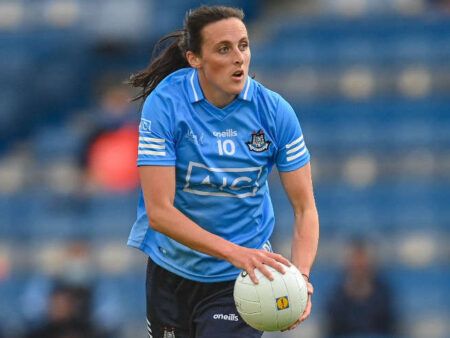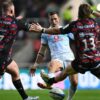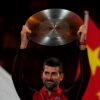
Overwatch 2, Blizzard`s ambitious successor to the beloved hero shooter, has navigated a path less glorious than its predecessor. Three years post-launch, its journey has been characterized by significant challenges, critical shifts in vision, and a persistent effort to recapture the “magic” that defined the original. Recent insights from Director Aaron Keller, Art Director Dion Rogers, and Associate Game Director Alec Dawson shed light on these struggles and outline a renewed, albeit somewhat vague, roadmap for the future.
The Evaporation of Magic: A Look Back at Early Hurdles
For many, the original Overwatch felt like a lightning strike – a perfectly orchestrated symphony of unique heroes, objective-based gameplay, and a vibrant world. Aaron Keller reminisced about this initial sense of “magic” but candidly admitted its dissipation during Overwatch 2`s tumultuous development.
“If you`re familiar with the history of the sequel`s production, you`ll also remember that the vision for what it was supposed to be changed over time. That sense of working together in lockstep with the team retreated and it was up to us to realign and redefine what this game was supposed to be,” Keller recalled.
The initial grand vision for Overwatch 2 revolved heavily around an expansive single-player PvE experience, designed to deepen the game`s lore. However, this focus ultimately faltered, leading to considerable player disappointment and accusations of “broken promises” when key PvE elements were scaled back or canceled. This pivot away from the much-hyped cooperative story missions left a significant void, forcing the development team to reassess their core objectives and re-emphasize the competitive PvP experience that formed the bedrock of the first game.
A Strategic Re-alignment: Rekindling the Spark
The turning point, according to Associate Game Director Alec Dawson, began around 2022 when he joined the team. His arrival coincided with a period of introspection, leading to a more structured approach to planning and a renewed commitment to “surprise and delight” the player base.
Dawson`s pivotal idea was the introduction of Perks. This concept, pitched after Season 9, aimed to allow players to customize their heroes` abilities, offering a fresh layer of strategic depth and personalization. While initially a challenging endeavor to implement, the team saw it as a worthwhile risk.
“As time went on and we found ourselves improving on many fronts,” Dawson stated, “It gave us the ability to back up a bit and think more structurally around how we plan an Overwatch year. How could we plan for more impactful seasons and surprise players? We needed something more.”
The introduction of Perks in Season 15 and the new “Stadium” environment in Season 16 proved to be catalysts. Keller noted that these bold, risk-taking changes began to pay off, with the community recognizing the improvements. It was at this juncture that the developers felt the elusive “magic” had finally returned, bringing Overwatch 2 back into relevance – or as the team put it, “so back.”
Lessons Learned and the Road Ahead: Bold New Directions
The development team`s takeaway from this arduous journey is a commitment to proactivity over reactivity, embracing risks, and challenging themselves. Dawson highlighted a shift in philosophy:
“But my takeaway from that experience is that we held certain things too close. We are now more willing to take risks and more willing to give ourselves tougher challenges… Our team is working on a number of those challenges right now.”
Art Director Dion Rogers chimed in, offering glimpses into the immediate future. Players can anticipate a new, currently unannounced hero. More intriguingly, Rogers spoke of “bold new directions” in the game`s visuals and thematic storytelling. This includes “exploring untapped corners of the Overwatch universe and experimenting with styles and storytelling that will surprise even our most dedicated fans.” While these promises remain tantalizingly vague, they signal a desire to push creative boundaries beyond the game`s established aesthetic.
Esports: A Constant in a Shifting Landscape
With the renewed focus firmly on competitive PvP, Overwatch 2`s esports ecosystem remains a central pillar. Updates and gameplay innovations are inevitably woven into the professional scene. The integration of Perks into the Overwatch Champions Series in February 2025 exemplifies this, adding complex new layers to team compositions and strategic play. The ongoing evolution of game modes and hero balancing will undoubtedly continue to shape the meta, with the potential to reignite viewership and attract new competitive talent. If the developers continue to deliver changes that resonate with the player base, the esports scene stands to benefit significantly.
Conclusion: A Second Wind for Overwatch 2?
Overwatch 2`s story is one of course correction, perseverance, and the arduous task of rebuilding trust. From the initial missteps of a grand but ultimately unfulfilled PvE vision to the resurgence fueled by a dedicated PvP focus and innovative gameplay mechanics, the game appears to be finding its footing. The developers` candid reflections, coupled with promises of new heroes, bold artistic directions, and continued esports support, suggest that Overwatch 2 is not just “back,” but potentially charting a more stable and exciting future. The challenge now lies in consistently delivering on these promises, ensuring that the “magic” doesn`t once again evaporate.






